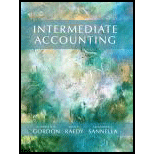
Concept explainers
Net Operating Loss, Carryforward, Tax Rate Change. Hamilton Container Company reported the following income (loss) information for the first 4 years of its operations.
| Year | Income (Loss) before Tax | Tax Rate (%) |
| 1 | $(400,000) | 40% |
| 2 | 100,000 | 34 |
| 3 | 230,000 | 34 |
| 4 | 620,000 | 42 |
There are no uncertainties about the realization of the net operating loss benefits. All tax rate changes were enacted as of the beginning of the year. All tax rate changes are not known until the year of change.
Required
- a. Prepare the
journal entry (ies) needed to record the annual tax provision for Years 1 through 4. - b. Prepare a partial income statement for each year.
- c. Prepare the footnote in both dollars and percentages required to reconcile Hamilton's federal tax rate to its effective income tax rate each year.
Learn your wayIncludes step-by-step video

Chapter 17 Solutions
Intermediate Accounting
Additional Business Textbook Solutions
Fundamentals of Management (10th Edition)
Accounting Information Systems (14th Edition)
MARKETING:REAL PEOPLE,REAL CHOICES
Principles of Operations Management: Sustainability and Supply Chain Management (10th Edition)
Business Essentials (12th Edition) (What's New in Intro to Business)
Financial Accounting, Student Value Edition (5th Edition)
- Compute the number of days sales in account receivable.arrow_forwardI am trying to find the accurate solution to this general accounting problem with appropriate explanations.arrow_forwardA business purchased a machine for $120,000 with an estimated useful life of 8 years and salvage value of $24,000. What is the annual straight-line depreciation amount?arrow_forward
- I am searching for the most suitable approach to this financial accounting problem with valid standards.arrow_forwardI need help with this financial accounting problem using proper accounting guidelines.arrow_forwardCan you solve this general accounting question with accurate accounting calculations?arrow_forward
- Need helparrow_forwardI am looking for the correct answer to this general accounting problem using valid accounting standards.arrow_forwardRoxbury Designs applies manufacturing overhead costs to products at a budgeted indirect-cost rate of $75 per direct manufacturing labor hour. A client has requested a bid on a special order for a customized necklace. Estimates for this order include: Direct materials of $63,500, 380 direct manufacturing labor hours at $22 per hour, and a 35% markup rate on total manufacturing costs. What is the bid price for this special order?arrow_forward

 Managerial Accounting: The Cornerstone of Busines...AccountingISBN:9781337115773Author:Maryanne M. Mowen, Don R. Hansen, Dan L. HeitgerPublisher:Cengage Learning
Managerial Accounting: The Cornerstone of Busines...AccountingISBN:9781337115773Author:Maryanne M. Mowen, Don R. Hansen, Dan L. HeitgerPublisher:Cengage Learning Excel Applications for Accounting PrinciplesAccountingISBN:9781111581565Author:Gaylord N. SmithPublisher:Cengage Learning
Excel Applications for Accounting PrinciplesAccountingISBN:9781111581565Author:Gaylord N. SmithPublisher:Cengage Learning





